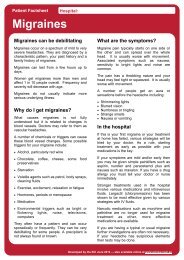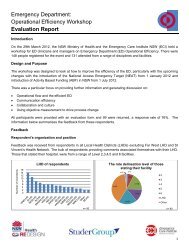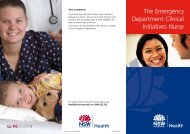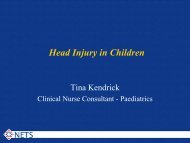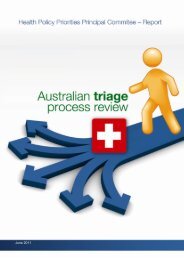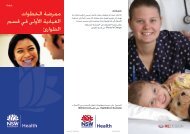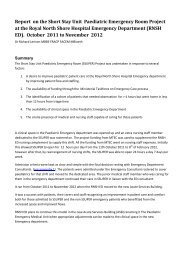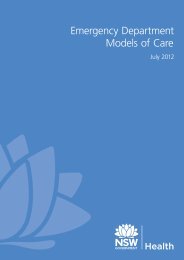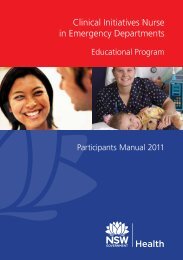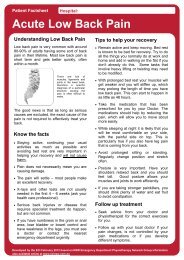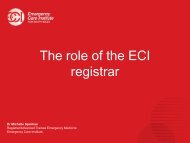Facilitators Manual - Emergency Care Institute
Facilitators Manual - Emergency Care Institute
Facilitators Manual - Emergency Care Institute
Create successful ePaper yourself
Turn your PDF publications into a flip-book with our unique Google optimized e-Paper software.
FACILITATORs’ <strong>Manual</strong> Transition to <strong>Emergency</strong> Nursing4 Sample lesson plansThis section contains a number of sample lesson plans for use by facilitators as required. Additionalplans may be included at the local level.304.1 ORIENTATIONAimThe aim of the <strong>Emergency</strong> Department Essentials orientation is to integrate and socialize cliniciansinto the emergency department environment. Local Health Districts may choose to use pre-existingorientation programs where content is equivalent to those outlined within this document. Governanceprocesses currently used by Local Health Districts are required to ensure the individual has completedorientation requirements.All participants new to an organisation are expected to attend and complete the mandatoryrequirements of corporate and nursing orientation. In addition to the standardised orientation programthe transition to speciality practice nurse will be required to complete unit specific orientation ~<strong>Emergency</strong> Department Essentials.Learning OutcomesAt the completion of this section the participant will be able to;• Identify the context of <strong>Emergency</strong> Department care within the health care continuum.• Outline the core concepts of triage.• Recognise the various <strong>Emergency</strong> Department models of care used within your <strong>Emergency</strong> Department.• Identify the various teams and their purpose within your <strong>Emergency</strong> Department.• Apply the elements of duty of care.Content• Integrated <strong>Care</strong>.• Departmental layout.• Models of <strong>Care</strong>.• Patient Flow.• Local Policies and Procedures.• Equipment.• Documentation/Communication.• Mandatory Reporting.• Occupational Health and Safety.Facilitator Activities/Modalities• Search and Find.• Experienced Learning.• Self Directed Learning.• Models of <strong>Care</strong> www.arch.net.au/e-library/build/moc/implementing_emocResources• NSW Health ‘Models of <strong>Care</strong>’ http://www.health.nsw.gov.au/nursing/projects/models_of_care.asp• http://www.health.nsw.gov.au/pubs/2006/models_of_care.html• http://www.health.nsw.gov.au/policies/PD/2005/pdf/PD2005_004.pdf• Australian Government Department of Health and Ageing (2007) <strong>Emergency</strong> triage education kit. Page 6• http://www.drinkingnightmare.gov.au/internet/main/publishing.nsf/Content/casemix-ED-Triage+Review+Fact+Sheet+Documents• CENA, Standards for the <strong>Emergency</strong> Nurse Specialist. 2008, CENA: Sydney. http://www.cena.org.au/• National Specialisation Framework for Nursing and Midwifery (2006) (Australian GovernmentDepartment of Health and Ageing, 2007: VII)• http://www.nursingandmidwifery.gov.au




